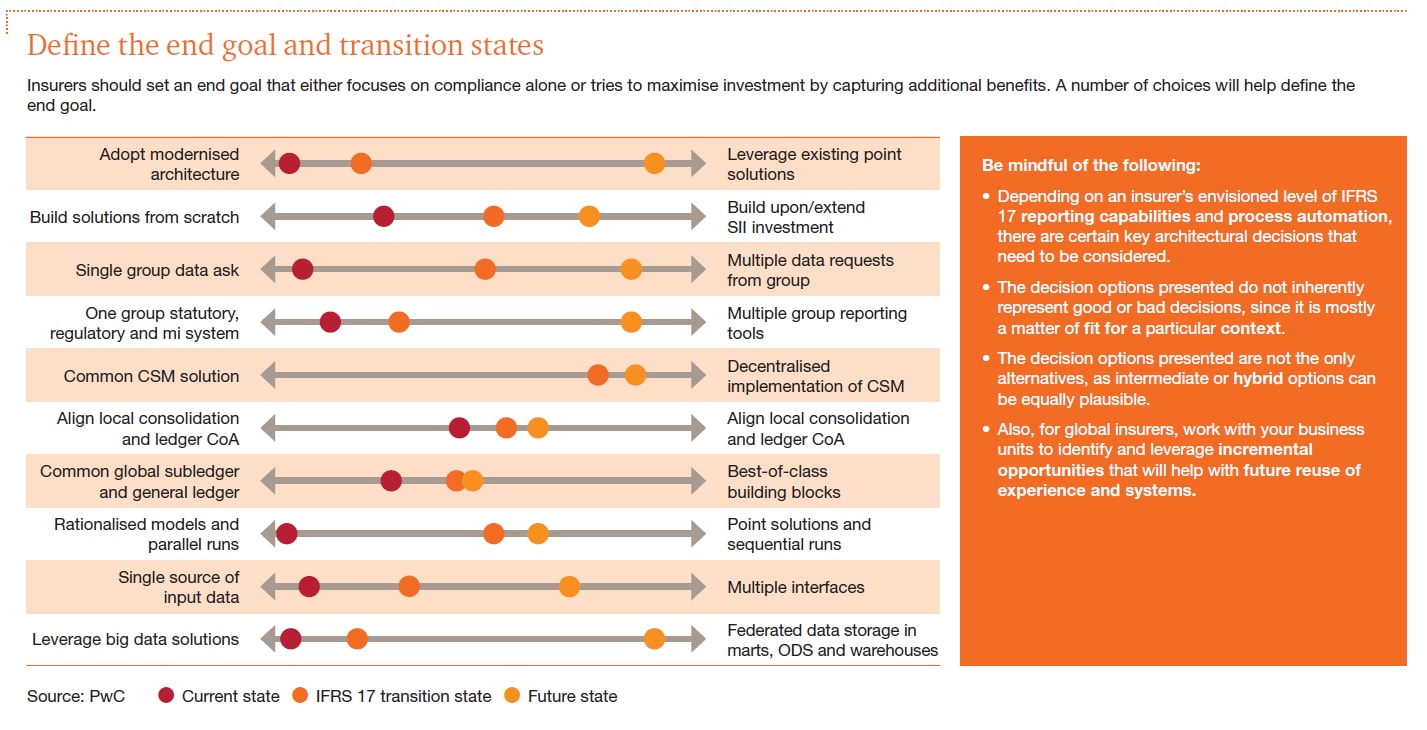

IFRS 17 for insurers
IFRS 17 presents opportunities to harness data more effectively, to improve the structure of your finance function - find out how with PwC.
IFRS 17 will require companies to overhaul underlying account systems. It introduces a new measurement of insurance liability (contractual service margin) and makes risk adjustment and discounting of future cash flows necessary. The operational impacts are considerable: additional policy and reinsurance data will be necessary, more granular cash flow will need to be analysed, and there will be new presentation and disclosure requirements. And designing new systems to integrate all of these changes will be even more difficult because of legacy systems and bespoke technical workarounds that many insurance companies have added over the years through multiple acquisitions and tactical fixes.
But there are steps you can take to navigate these changes. The first is to look beyond the technical interpretation of the standards and give attention to the operational impact of IFRS 17. In this article we’ll discuss the core decisions and ideas you should consider early on to make sure your company’s operations can adapt and thrive under the new rules.

A soft design process can help insurers identify an effective IFRS 17 technology solution and operating model | Duration 4:31
Many insurance companies have already conducted an impact assessment and so, at a high level, understand the gap between what they have and what they need. Where you might be stuck is in making the leap from impact assessment to implementation over the next three to six months. You might be wrestling with how to set the foundation for IFRS 17, build a business case, and develop a blueprint for your organisation that translates your vision, principles and requirements into an early-stage design. To succeed in these endeavours, we advocate taking a “soft design” approach to the implementation.
Soft design is a flexible way of working. It acknowledges that you must build in the ability to tweak your plan along the way. Your company can’t wait for the perfect solution before beginning to execute change. You’ll surely run out of time. So, soft design allows you to get started but identifies points when you can course correct as you proceed on your IFRS 17 journey.

Don’t make changes to comply with IFRS 17 without first knowing your end goal. Articulate and document what that end goal looks like for the organisation and then work backward from systems and structure all the way to the platform needed for reporting. Otherwise, there will be a lot of last-minute scrambling to achieve goals.


IFRS 17 presents opportunities to harness data more effectively, to improve the structure of your finance function - find out how with PwC.

PwC's Global IFRS 17 Leader, Alex Bertolotti, discusses with Alwin Swales, Partner, PwC UK, the 3 decisions insurance companies need to make in the lead up to the transition to IFRS 17. Flexibility must be built into their plans.

PwC's Global IFRS 17 Leader, Alex Bertolotti, discusses with Alwin Swales, Partner, PwC UK, the operational challenges of IFRS 17 implementations that fall into 4 buckets.

PwC's Global IFRS 17 Leader, Alex Bertolotti, discusses with Alwin Swales, Partner, PwC UK, what's next for insurers after the impact assessment of IFRS 17.